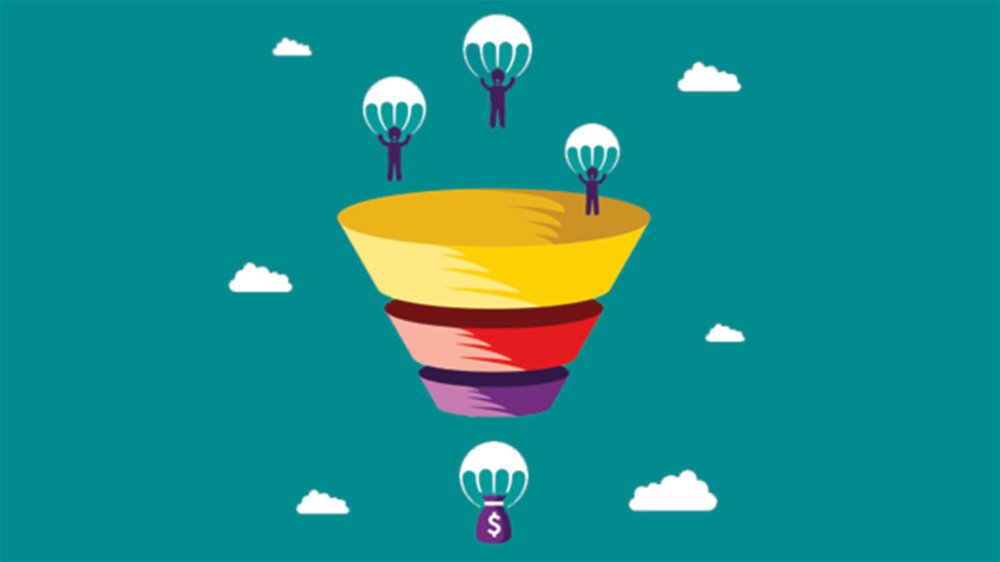One of the things that gets me most excited as a marketer is uncovering new information to solve problems. I’m eager to explain how to do exactly that with one of my favorite tools: content offers! Here are 7 key questions to ask yourself about any new content offer.
What kind of content can we offer?
First, it’s important to establish what kind of content makes for a good offer. A lot of times, it seems people think it’s just a PDF that potential customers can download. It can be that, but there are a lot of other possibilities, too! Content you can offer includes coupons, free trials, eBooks, guides, webinars (even archived ones!), slideshows, research, case studies, and more.
The content you offer up can be a free thing a potential buyer can use or learn from, or an experience that will provide them some value related to a challenge they’re trying to address.
What makes a content offer good?
The range of potential content you can offer may be unlimited, but that doesn’t mean just any content will do. So, what makes a piece of content a good offer?
A good content offer is relevant to the user, makes sense to them, and gives them the ability to act on their challenge in some way. It should address a problem that is very specific to them and communicate that your company understands them. It may not be a complete solution to the challenge, but even information that helps them understand that challenge better and begin exploring ways to address it is a strong start.
Every piece of the interaction should be seamless and relevant to them, from the way the landing page pitches the offer to the platform it’s offered on.
What are common mistakes?
One of the most common mistakes I see is content that doesn’t match where the user is in their buying journey. Companies like to get married on the first date, so they can fall into the trap of pushing folks in the Awareness stage to “buy buy buy.” Basically, they offer bottom of the funnel content right off the bat. A more effective approach is to figure out where the user is in their journey and offer them content relevant to that stage.
Another mistake is not fully communicating on the landing page what the content is. If you’re asking people to give you information like their name and email address, they need to understand what they’re getting in return. First, they need to know it’s worth it. Second, they need to feel the explanation was accurate once they see it. If they feel they’ve been duped, your follow-up probably isn’t going to engage them because they don’t trust you anymore.
And that leads to the last mistake: lack of follow up. Some folks seem to think that once a user has downloaded the content, the interaction is over, but the follow-up is really the point. You’ve gathered more information about the user, qualified them a bit, and helped them progress a little further into their buyer’s journey. Follow up by continuing the conversation they are having with your company, whether that conversation continues through marketing, sales, or even customer support, depending on where they are in that journey.
What kind of content should we offer at different points in the sales funnel?
Users who are just becoming engaged with your company are likely in the Awareness stage of their buyer’s journey. At the top of the sales funnel, these people just need education. They’re likely organically searching on Google with plain English that says basically, “This is my problem. I need help.”
First of all, that means your offer should be easily discoverable through a search related to the challenge they’re experiencing. Second, it means the content should not be focused on selling, but on helping them to understand their challenge and establishing you as an expert in the industry.
Third, your content should provide you with information about the user through the interactions they have with the content. Did they watch the whole webinar? Did they go to the same page in the PDF you gave them over and over again? This kind of information allows you to check boxes about who they are and the challenges they’re experiencing in greater detail so that you can follow up with another piece of content more specific and relevant to them.
It still may not be selling them a specific product, but continuing the education process with information about how your company fits into the industry and how you go about fixing the problem the user is trying to solve. It’s also an opportunity to boast a bit about your industry knowledge. If you get it right, you’ll boost their confidence in your company while they’re in the middle of the sales funnel and help to push them toward the bottom.
Of course, bottom-of-the-funnel content offers are going to be more focused on closing. This is where you get to “sell sell sell.”
When are content offers particularly useful?
The short answer is, “Always.”
As marketers, we’re always trying to get users to make a decision that tells us more about them so we can sell them the products that match them best. Unfortunately, we don’t always do that with tact. Content offers are a solution to that problem.
They give us an opportunity to open a conversation with someone by offering them something of value. In keeping with that, they shouldn’t just come out of the blue. They should be a logical response to some action they’ve taken, whether it’s clicking on a link in search results, opening an email, or visiting a social media page.
Put crudely, we’re trying to lower their BS meter through a logical progression sincerely aimed at trying to match them with tools that will solve their problems. Content offers do that naturally by providing the user real value and establishing us as industry experts at the same time.
Should content offers ever be avoided?
There’s a short answer to this question, too, and you’ve probably already guessed that it’s “no.” In addition to the benefits I’ve already addressed, content offers help you rank on Google so you’re easier to find. There’s really not a strong downside to offering people content. There is a caveat, though.
Sometimes a potential customer comes to a company further along in their buyer’s journey. If you can help those people find the appropriate place to join your sales funnel a bit further down, there’s no need to offer them top-of-funnel content.
I’m not a content creator. How do I become one?
Getting into content creation can feel a little intimidating if it’s not your business. To get things moving, of course, you could hire a company that produces world-class content every day, like PR with Panache!
But if you want to do it yourself, just start by asking what questions people have when they first become aware that they’re facing the challenge you have solutions for. A good start is asking current customers a question like, “What factors were you considering when you were buying this? How did you go about finding our product?”
Ask yourself what kinds of questions you’d need to have answered before buying your product, answer them, and then go put them out into the world where your potential buyers are looking for solutions.
About the Author

Benjamin Bachman is serves as Marketing Director for PR With Panache! Having built two Gold Marketing HubSpot Agencies from the ground up, Benjamin comes with a wealth of experience in both marketing and culture-building. He is also the son of a 40-year veteran of the Pennsylvania public education system
For Benjamin, the human connection is the most important. He finds that an honest exchange of value—one in which the individuals in a relationship mutually benefit one other—is what drives his marketing strategies. Through his past experiences, he has learned that caring for someone’s passions, goals, and desires are the real value in a business exchange.











